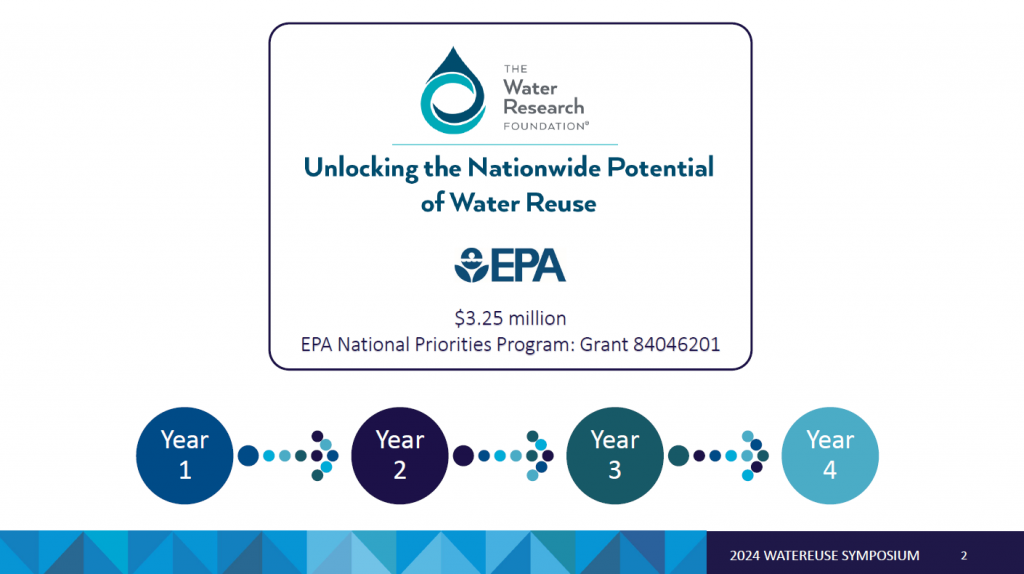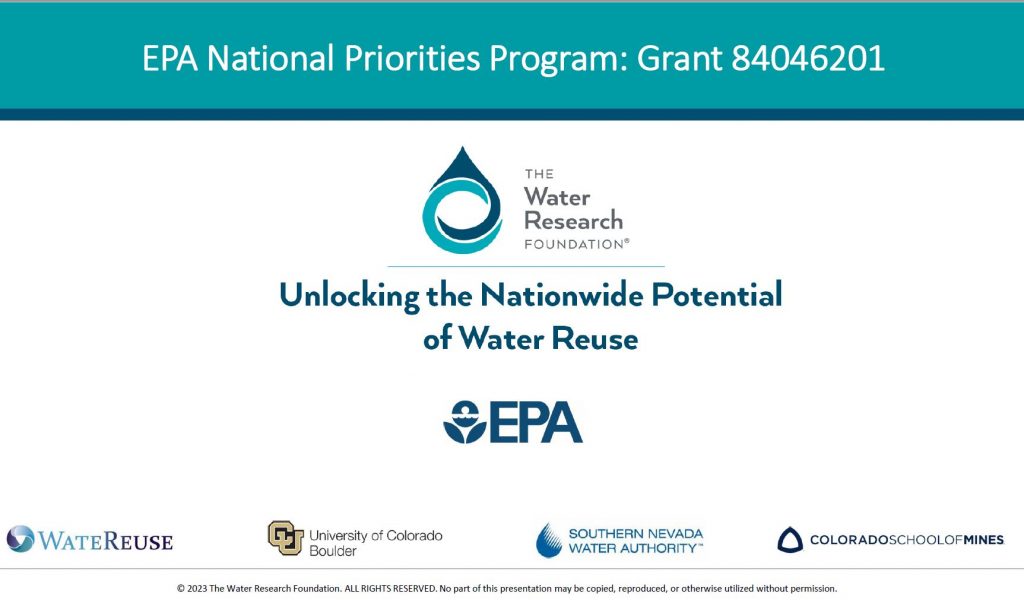Unlocking the Nationwide Potential of Water Reuse
Project News & Updates
Annual Report: 2024
The Water Research Foundation submitted an Annual Report on the project’s progress to the United States Environmental Protection Agency. Read the Report.
EPA Awards $6.4M for Research to Support National Water Reuse Efforts
The U.S. Environmental Protection Agency announced research grants totaling $6.4 million to Iowa State University and the Water Research Foundation for research to support national efforts to reduce technological and institutional barriers for expanded water reuse. Read more.
Project Slides: 2024 Update
The Water Research Foundation presented a panel at the 2024 WateReuse Symposium in Denver, CO on to Unlocking the Nationwide Potential of Water Reuse.

Project Slides: 2023 Update
The Water Research Foundation presented a panel at the 2023 WateReuse Symposium in Atlanta, GA on to Unlocking the Nationwide Potential of Water Reuse.

Project Overview
The recent adoption of the National Water Reuse Action Plan (WRAP) by the U.S. Environmental Protection Agency (EPA) has resulted in an effort to advance the adoption of water reuse at a national scale. This effort envisions numerous forms of reuse as supplementing existing water supply portfolios (e.g., municipal, agricultural, industrial, and on-site reuse) and the integration of stormwater into local water resource supplies. Realizing the full nationwide potential of water reuse will require an integrated research plan and the establishment of technical and social legitimacy through a concerted focus on community acceptance, robust technical design including monitoring and feedback, and implementation of water reuse. These factors are shaped by local social and environmental drivers and potentially by geographic location. Water reuse adoption and implementation can only be achieved by engaging with communities to identify design options that best address the unique needs of the local population and water resources. This project will use a technically rigorous fit-for-purpose approach to show decision-makers and community leaders where opportunities exist for various types of water reuse and how reuse can address environmental and social needs in their communities.
This project is funded through the EPA’s National Priorities Program under grant number 84046201.
